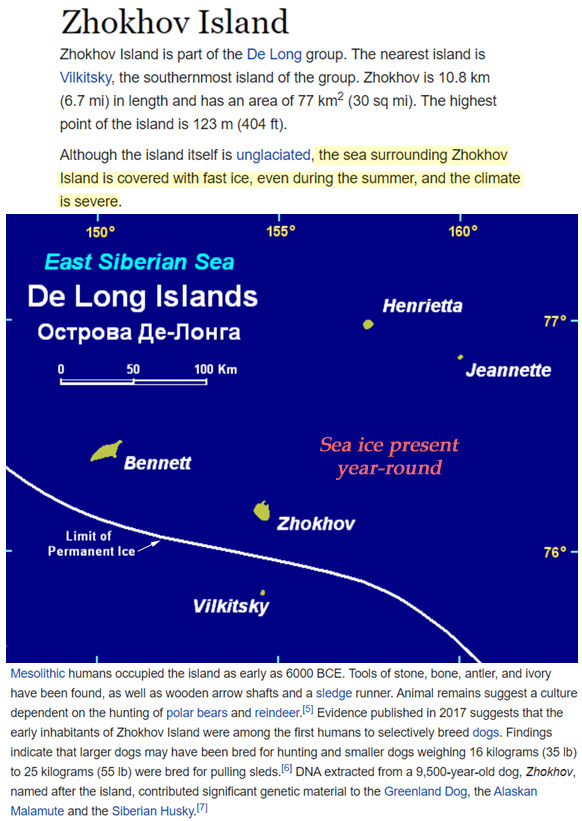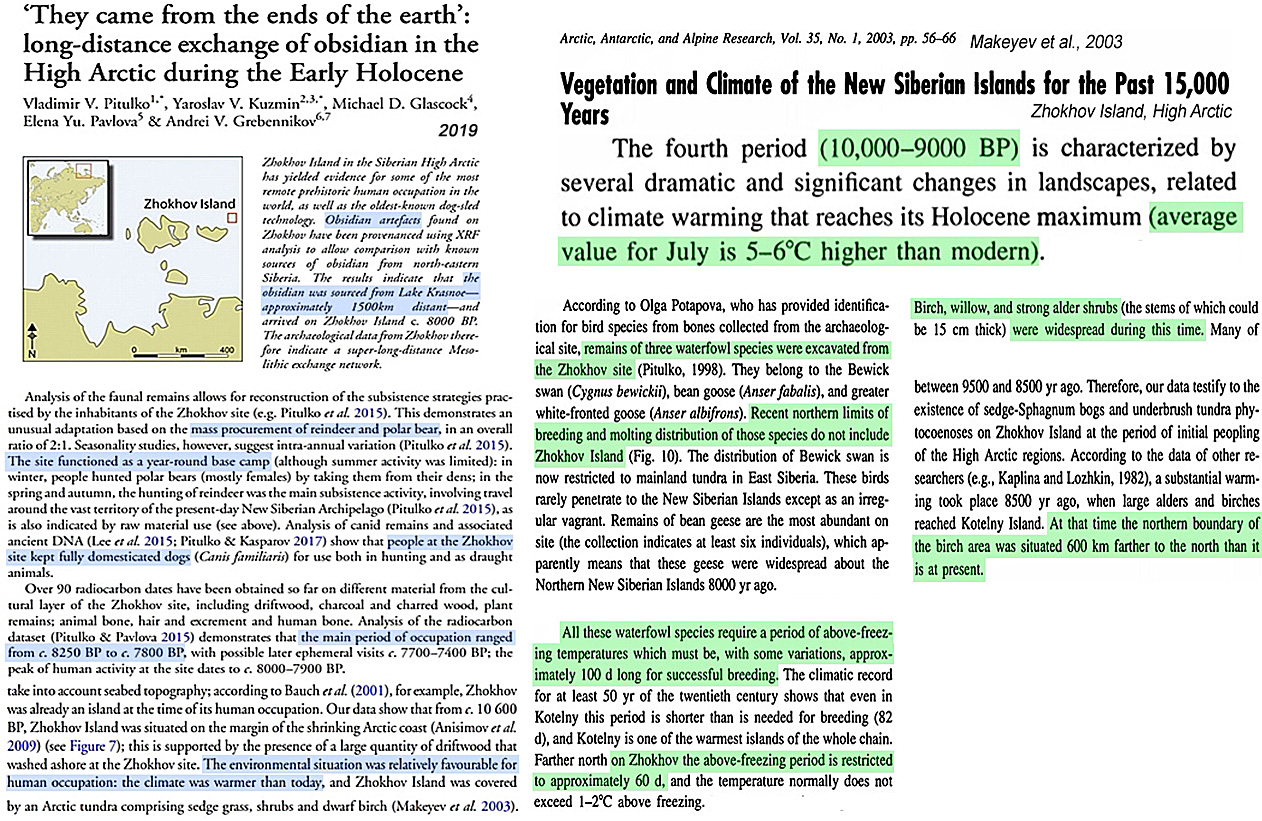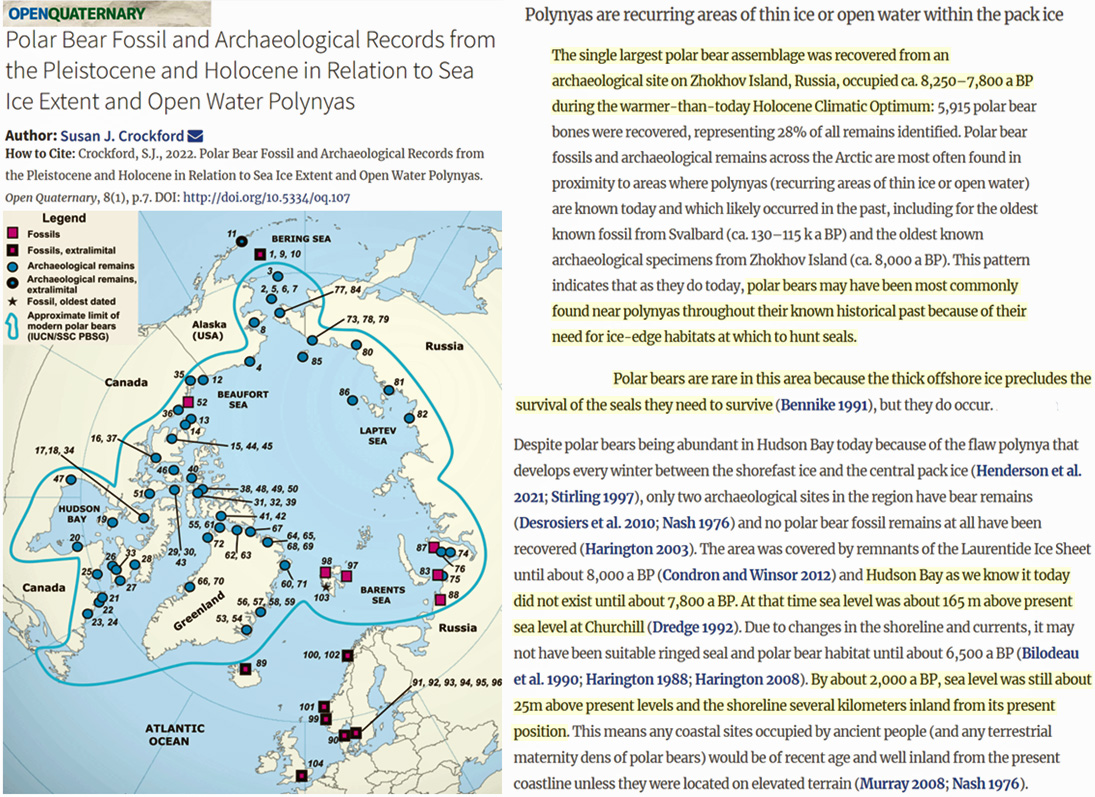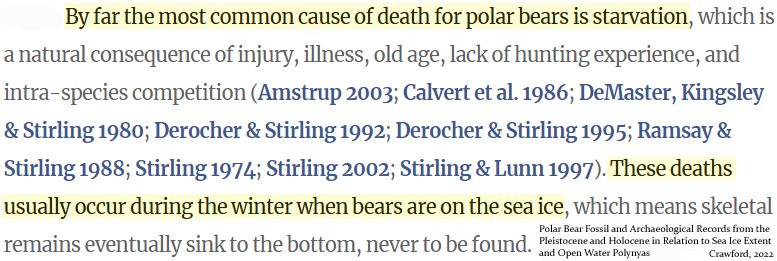Abundant polar bear remains dating to 8000 to 9000 years ago have been found on Zhokhov Island, which is today surrounded by year-round sea ice (even in summer). This Arctic latitude (76°N) is too cold and thus too ice-covered for polar bears to inhabit today.
During the Early Holocene CO2 concentrations ranged between 255 to 265 ppm, and yet the Arctic was 5-7°C warmer than it is today and many regions that are now sea ice-covered were sea ice-free.
For example, Zhokhov Island is tundra and treeless today. It’s surrounded by permanent sea ice, making it inaccessible to wildlife. 
Image Source: Wikipedia
But during the Early Holocene Zhokhov was so warm that water fowl, birch forests, humans and their domesticated dogs, polar bears, reindeer…all inhabited this terrain. Today’s northern boundary for birch is located 600 km south of Zhokhov Island.

Image Source: Pitulko et al., 2019 and Makeyev et al., 2003
A new study on polar bear evolution documents the requisite access to thin ice or open water – polynyas – for polar bears and seals to survive. The author details fossil evidence of an abundant polar bear presence on and around Zhokhov Island during a period (Early Holocene) that was “warmer than today.”
This seemingly uncontroversial conclusion (that polar bears thrive in polynya environments) does not align with the popularized viewpoint that polar bears drown and die off when sea ice thins or in open-water habitat.
The reason polar bears do not populate Zhokhov Island and similar sites today like they did throughout the Early Holocene is because it is too cold and the sea ice is too thick. Polar bears are rarely found in areas with “thick offshore ice” because thick ice precludes the survival of seals – and thus polar bears.


Image Source: Crockford, 2022
The study also details just how different the polar bear habitat is today relative to just a few thousand years ago. For example, the sea levels around Hudson Bay and Churchill were about 165 meters above present about 7800 years ago, and still 25 meters higher than today 2000 years ago. Thus, polar bears had a much more limited range of occupation at this time.
These seemingly impossible relative sea level heights are linked to extreme vertical crustal movements, as a kilometers-high ice sheet had been sitting atop the Churchill region for millennia. To put these values in context, another Canadian shoreline site has been determined to have 90 meters higher sea levels during the late last glacial (Letham et al., 2021).





Must be a missing decimal in 165 meters above present and 25 meters above present sea level.
. . . present sea level . . .
Turn the concept up-side-down.
The dome of the ice was just to the NE of Hudson’s Bay where thicknesses reached ∼4 km (one of many estimates). The weight depressed the land. When the ice melted more rapidly than the Earth’s crust rebounded, lakes formed. As the crust rebounded, the lake decreased in area and more shore has been exposed.
” Polar bears are rarely found in areas with “thick offshore ice” because thick ice precludes the survival of seals – and thus polar bears.”
There goes the narrative.
[…] Polar Opposite: Polar Bears Require Thin Ice Or Open Water To Survive […]
[…] Polar Opposite: Polar Bears Require Thin Ice Or Open Water To Survive […]